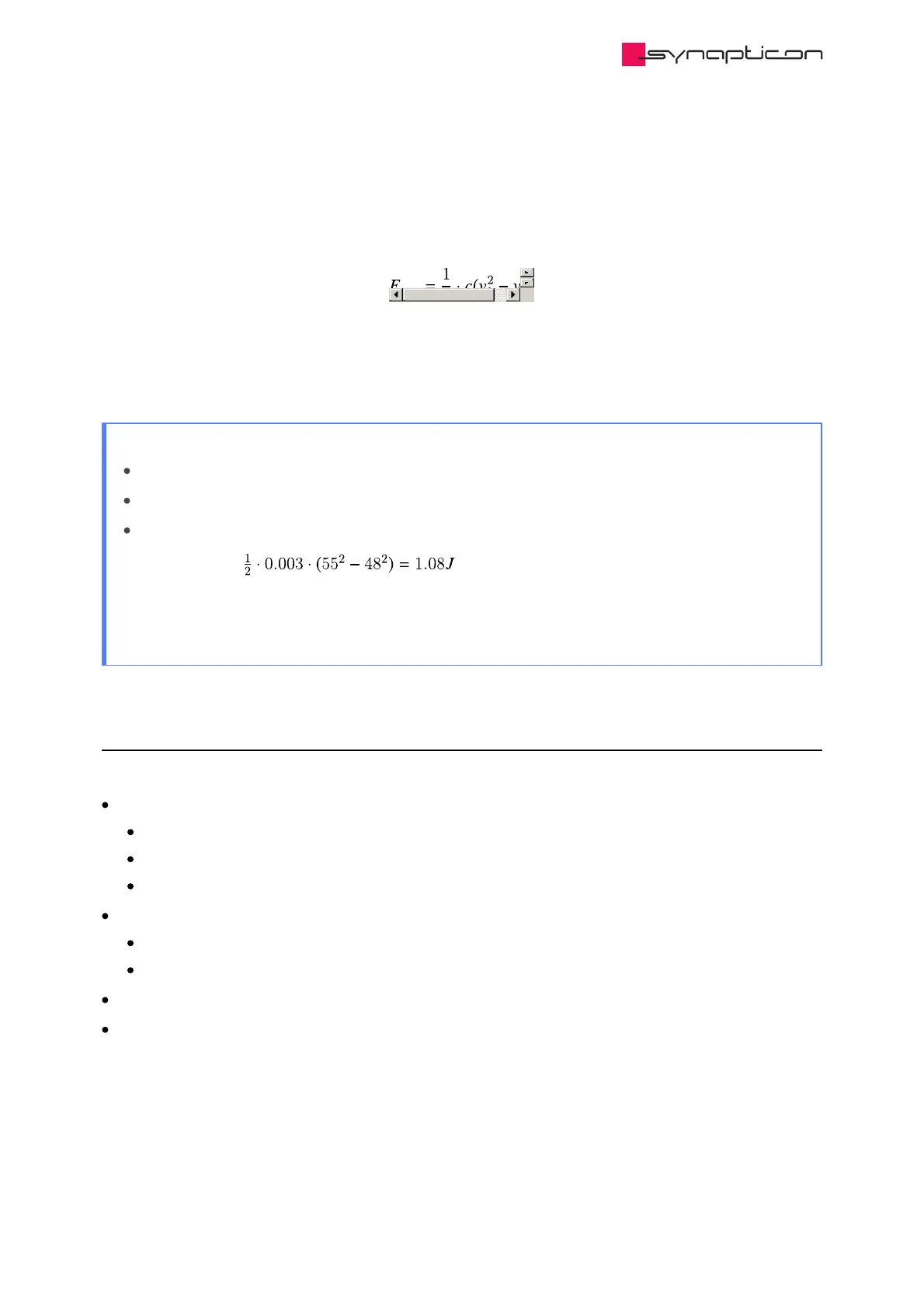4.1.2.2.1 Calculating the Capacitance
The amount of energy (in joules) stored by a capacitor is determined by the capacitance (C) and voltage (V) and
is given by:
v is the nominal voltage.
v is the maximum voltage level that is limited by the braking chopper or a braking resistor.
C is the total capacitance of DC BUS (Power supply capacitor + External capacitor + Drive capacitor).
Example
v = 48 V
v (protection voltage level) = 55 V
C = 3 mF
E calculates to: , which means the capacitor can absorb 1.08 J of
regenerated energy. Increasing the capacitance is costly and requires space. For estimating the
minimum DC link capacitance consider 0.5 µF for 1 W drive power. It is recommended to use a 470 µF
capacitor for a SOMANET Node 1000. If the power supply capacitance is more than the estimated
capacitance, no additional capacitors are required.
1
2
1
2
cap
4.1.2.3 Power supply sizing
For sizing a power supply, the following questions need to be answered:
How much Watt does the system need?
Voltage level and Amperage
Power losses and constant power consumption
Peak power and average power
Will regeneration be a concern?
Power supply capacity
Braking resistor
At what voltage level should the system operate?
Should a battery or a switching power supply be used?
Switching power supplies are the most common power supplies for industrial applications, but some
applications require batteries. There are some considerations for selecting a suitable power supply. The
power supply should be able to provide the demanded power. For the power calculation, the maximum power
of each motor and its duty cycle need to be considered for selecting a proper power supply. In rare cases,
regenerative power can be helpful when the system features several servo drives which accelerate and
decelerate.
